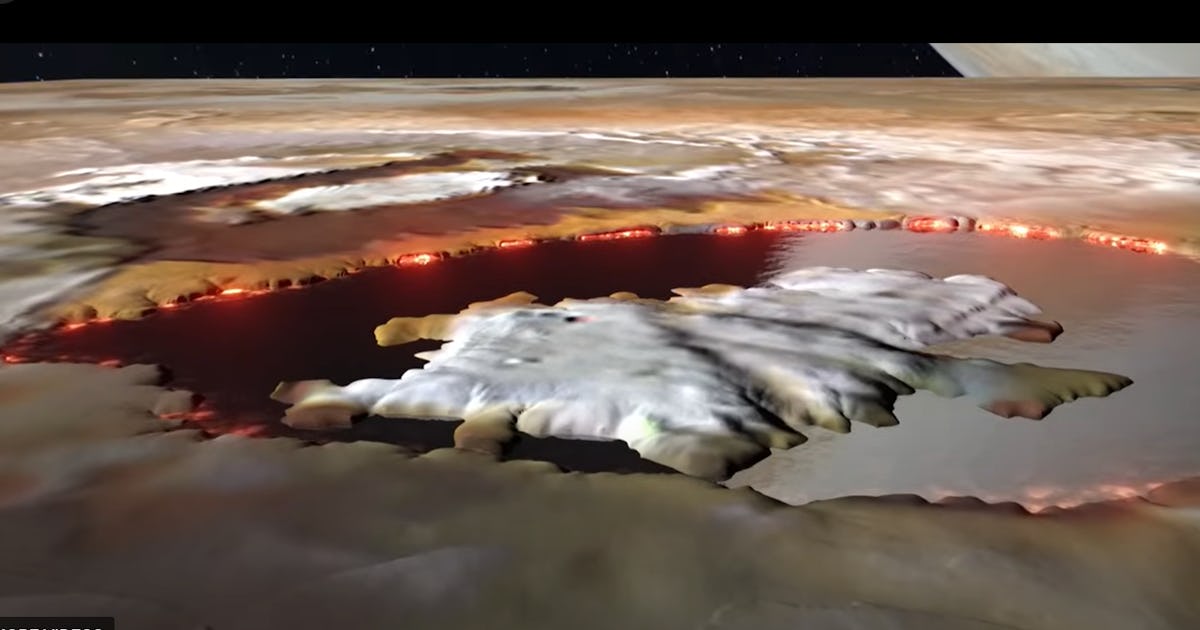NASA’s Juno Spacecraft Stumbled On A Glistening Lava Lake On Jupiter’s Moon Io

🌈 Abstract
The article discusses NASA's Juno spacecraft's discovery of a glistening lava lake on Jupiter's moon Io, called Loki Patera.
🙋 Q&A
[01] Loki Patera
1. What is Loki Patera?
- Loki Patera is a lava lake on Jupiter's moon Io, discovered by NASA's Juno spacecraft.
- It is a 127-mile long lava lake, with a glassy-smooth surface of volcanic rock, likely similar to obsidian.
- The lava lake has rocky islands and glowing hot magma lining its edges, peeking through cracks in the glassy crust.
2. How does Loki Patera compare to lava lakes on Earth?
- Loki Patera is similar to calderas on Earth and Mars, but it may form a little differently due to Io's unique tectonic movements.
- Unlike ice on frozen lakes on Earth, the rock crust on Loki Patera gets heavier as it cools and solidifies, eventually sinking into the molten magma beneath.
3. What does Loki Patera's surface look like?
- Loki Patera's surface is a glassy-smooth, mirrorlike reflection of the volcanic rock, likely similar to obsidian.
- The surface slowly cools into a hard, thin crust of volcanic glass, which reflects sunlight brightly.
- The crust eventually becomes too heavy to float on the molten magma beneath, causing it to sink and expose the bubbling, molten surface.
[02] Juno Spacecraft's Observations
1. How did Juno capture images of Loki Patera?
- When Juno's orbit swooped past Io last December, its cameras captured a mirrorlike reflection from a small patch of the moon's surface, which turned out to be the Loki Patera lava lake.
- Juno's images of Loki Patera are the clearest and most detailed observations of the feature to date.
2. What other spacecraft have observed lava lakes on Io?
- Previous spacecraft, including Galileo, have also sent home images of similar lava lake features on Io, but Juno's observations are the most detailed.
- Galileo captured an image of a patera on Io, with magma gushing in from fissures at the base of its rocky walls, back in 2000.
Shared by Daniel Chen ·
© 2024 NewMotor Inc.